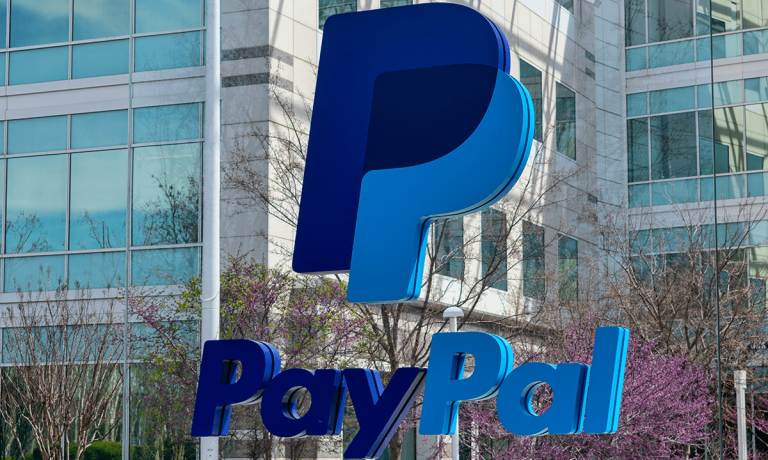
PayPal’s growth – like so many payments peers – is slowing.
But even as the macro environment is uncertain, the active users that are in place are transacting more often.
“One of the things that is important to realize is digital wallets in general, including PayPal, have been growing share,” retiring CEO Dan Schulman said. “Overall, we grew share on over a hundred basis points during the pandemic … but we continue to take share from manual card entry.”
The company is seeing particular success with BNPL, which Schulman said “is driving significant lifts in checkout and incremental TPV [total payments volume].” Since launch three years ago the company has extended 200 million loans to over 30 million consumers, and counts 300,000 merchants among its BNPL roster. The company’s BNPL tally within its TPV stands at $20 billion through the last year, up more 160% year over year, and as the transaction count grew by more than 200%.
The supplemental materials that accompanied earnings show that TPV was up 9% on an foreign exchange-neutral basis to $357 billion in the latest quarter.
Peer-to-peer (P2P) volume — which includes PayPal, Venmo and Xoom — declined 2%, to $91 billion. Venmo TPV was up 3%, to $62.5 billion.
Cross-border trade was flat on an FX-neutral basis to $45 billion, and represented 13% of TPV, down a bit from the 14% tally last year.
As for the increased usage: Transactions per active account were up 13%, at 51.4.
“We are putting significant resources behind the modernization of our checkout experience in order to defend and grow our market share in our branded checkout business,” he said. This includes the continued drive towards passwordless, one-click native, in-app experiences, said the CEO. The new checkout integrations, according to commentary from the call, are lifting conversions from between 3% to 10%.
PayPal Complete Payments, he said, “will meaningfully expand our unbranded total addressable market by as much as $750 billion.
Looking ahead, Schulman said, “our baseline assumption is that discretionary spend will remain under pressure and global eCommerce growth will be slightly positive year over year. That said, we are seeing signs that inflation is beginning to cool and it’s logical to expect that discretionary spend versus nondiscretionary spend will begin to increase.”
Interim CFO Gabrielle Rabinovitch said on the call that transaction revenue grew 5% to $6.7 billion, driven primarily by Braintree and Venmo. U.S. revenue grew 10% and international revenue grew 2% on a currency neutral basis. And, as she noted, loss performance improved relative to the fourth quarter last year. Losses were 0.05% of TPV.
And with a nod to the fact that the installed base is firmly entrenched within the PayPal ecosystem, looking ahead through 2023, the CFO said that “we do not expect total active accounts to grow in 2023. That said, we have confidence that our monthly active, unique user base will be stable to growing.”
Reflecting on current trends, Schulman said “We’re seeing widespread acceleration both in January and February. We’re seeing it in branded checkout, which has stepped up quite nicely from Q4. We’re seeing it in our Braintree services as well. Buy now, pay later, continues to accelerate.”
As he told the analysts: “What’s really happening is our MAUs [monthly active users] are incredibly consistent, staying with us, are highly satisfied, are active quite a bit and growing.”